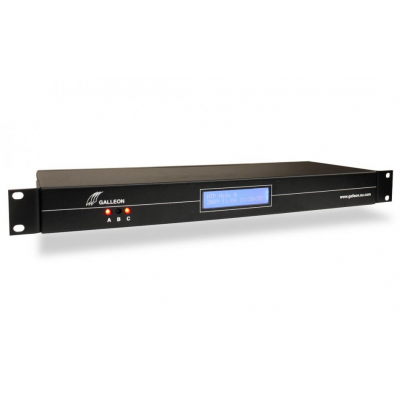When it comes to network time synchronisation, these days, you just can’t be too careful. Accurate and secure time is essential to keep a network healthy and to avoid problems.
Acquiring a secure source of time is often not as easy as it sounds. Many online time sources can expose a network to vulnerabilities, such as allowing malicious code through the firewall. Furthermore, an internet time source could itself be compromised and their accuracy is never guaranteed.
To ensure security and to maintain precision and accuracy all the time, the only real solution is to use a time source external to the network and internet. For that, a GPS time server is the perfect tool, which will maintain millisecond accuracy for your network while being 100% secure and resistant to attack.
How it works
As the name suggests, GPS time servers receive their time from the GPS system (Global Positioning System). The GPS signal is basically just a time code sent down from the satellites’ onboard atomic clocks. This time signal is what satellite navigation systems use to triangulate positioning, but because it is generated by atomic clocks is extremely accurate and precise.
The GPS time server receives the time signal via a rooftop antenna, This is then used as a master time source by NTP (Network Time Protocol) to distribute around all the machines on a network to enable synchronisation.
What is NTP
Network Time Protocol is a software algorithm used for time synchronisation. Not only does NTP distribute the master time source received by the GPS time server, but also it continually checks the time on each device and alters it to ensure it is running accurately to the master time.
NTP is a tier-based system. This means, rather than have hundreds of devices all checking the GPS time server for the correct time at once, a tier of a dozen or so master devices use the GPS time server, while a further tier of machines check the time on these master devices, and another tier checks the time on those, and so on.
Installation
Installing a GPS time server is incredibly simple. The only difficulty is ensuring that the GPS antenna has a line of sight view of the sky. This is because GPS signals are fairly weak and can’t penetrate through buildings. A rooftop is obviously the best location, but if this is not possible, the side of a building may do just as well.
Once the antenna is installed the GPS time server is plugged into a router or master switch. This ensures it is available to all devices on the network. However, it is possible to plug a GPS time server direct to a single machine, although the traffic to that machine may become a hindrance.
Once installed, it may take a few hours for time server to get a lock on a satellite, but once this is achieved, the GPS time server is ready to be used for synchronisation. Most time servers come with an installation disk, so this just needs to be run on any machine, which will then install and activate the GPS time server to begin synchronisation.
